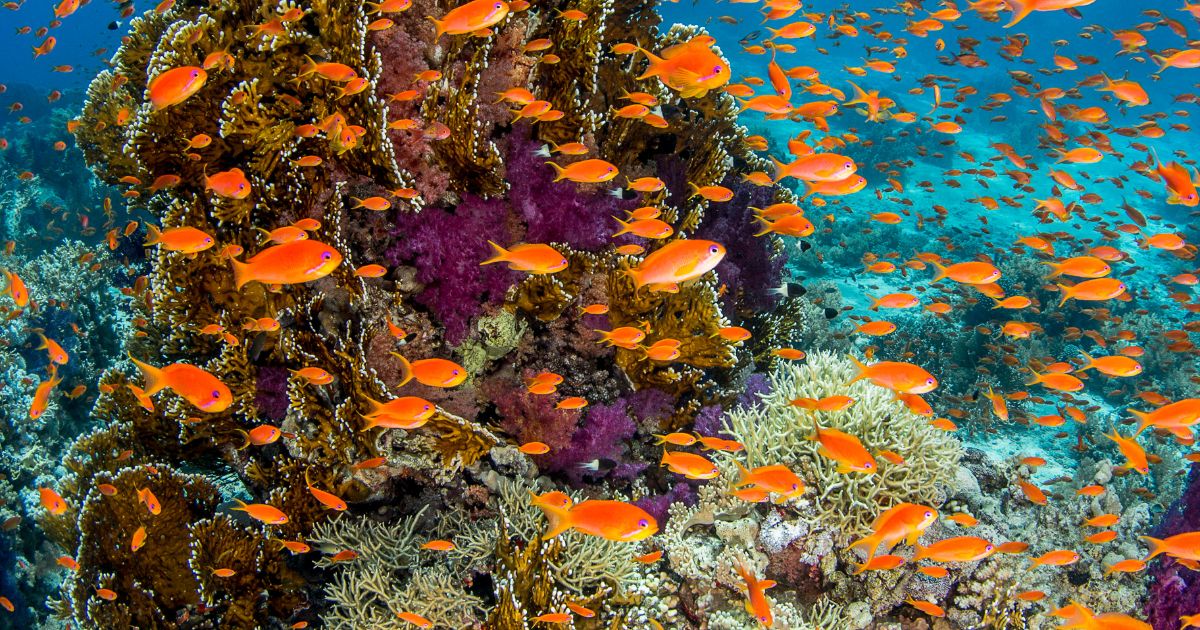Pre-historic coral reefs dating back up to 250 million years extended much further away from the Earth’s equator than today, new research has revealed.
The new study, published in Nature Communications, demonstrates how changes in temperature and plate tectonics, where the positions of Earth's continents were in very different positions than today, have determined the distribution of corals through the ages.
Although climate has often been regarded as the main driver of the location of coral reefs, this had yet to be proven due to limited fossil records. Now, for the first time, a team of international scientists used habitat modelling and reconstructions of past climates to predict the distribution of suitable environments for coral reefs over the last 250 million years.
The researchers, from the University of Vigo, in Spain, the University of Bristol and University College London in the UK, then checked their predictions using fossil evidence of warm-water coral reefs. They showed that corals in the past, from 250 to about 35 million years ago, existed much further from the equator than today, due to warmer climatic conditions, and a more even distribution of shallow ocean floor.
"Our work demonstrates that warm-water coral reefs track tropical-to-subtropical climatic conditions over geological timescales. In warmer intervals, coral reefs expanded poleward. However, in colder intervals, they became constrained to tropical and subtropical latitudes," said first author Dr Lewis Jones, a computational palaeobiologist research fellow at the University of Vigo.
Suitable coral habitats became restricted to the tropical regions from about 35 million years ago, driven by global cooling and increases in shallow oceans resulting from tectonic changes of the Indo-Australian Archipelago which is recognised as a marine biodiversity hotspot.
Although this suggests warm temperatures permitted long-term poleward expansions of corals in the past, the researchers say coral reef ecosystems are unlikely to match the rapid rate of human-induced climate change.
"Current anthropogenic climate change will result in the poleward expansion of suitable habitat for coral reefs. In fact, we are already witnessing the expansion of some tropical reef corals. However, whether coral reef ecosystems -- and all the biodiversity they support -- can keep pace with the current rapid rate of anthropogenic climate change is another question," Jones said.
"Limiting global warming is fundamental to saving coral reefs, as well as the biodiversity they house. Yet, perhaps even more important is reducing the rate of global warming."
Warm-water coral reefs, also known as 'rainforests of the sea', support the greatest biodiversity of marine organisms on Earth. In today's oceans, these biologically rich ecosystems, including reef fishes, are limited to the tropics and subtropics, where temperatures of the ocean surface typically do not fall below 18ºC. A substantial proportion of this modern biodiversity is found in the Indo-Australian Archipelago. However, in the geological past, coral reef ecosystems also existed outside of the tropics and subtropics, with their fossil remains found much further from the equator.
Co-author Dr Alex Farnsworth, Senior Research Associate in meteorology and climate modelling from the University of Bristol Cabot Institute for the Environment, said: "Climate has changed significantly throughout geological time, however understanding how it has impacted coral reef ecosystems has been difficult due to a lack of quantifiable data which has significant gaps.
"Using this new combined data-model approach we can start to better understand reef ecosystems evolution and behaviour." Previous work has failed to find a strong relationship between temperature and the distribution of coral reefs because the fossil record is incomplete and biased. For example, not all the remains of organisms or ecosystems that existed in the past are recorded in the fossil record, and it has been shown the single most important factor explaining the sampled distribution of ancient reefs is Gross Domestic Product, with the majority of known fossil reef data stemming from wealthy countries, purely because these are the regions where we have looked hardest.
Co-author Dan Lunt, Professor of Climate Science at the University of Bristol Cabot Institute for the Environment, added: "This work highlights that climate and ecosystems have been intimately entwined together in Earth's past history. This has crucial implications for ecosystems today, given current global warming."
By University of Bristol
Journal Reference:
Lewis A. Jones, Philip D. Mannion, Alexander Farnsworth, Fran Bragg, Daniel J. Lunt. Climatic and tectonic drivers shaped the tropical distribution of coral reefs. Nature Communications, 2022; 13 (1) DOI: 10.1038/s41467-022-30793-8



